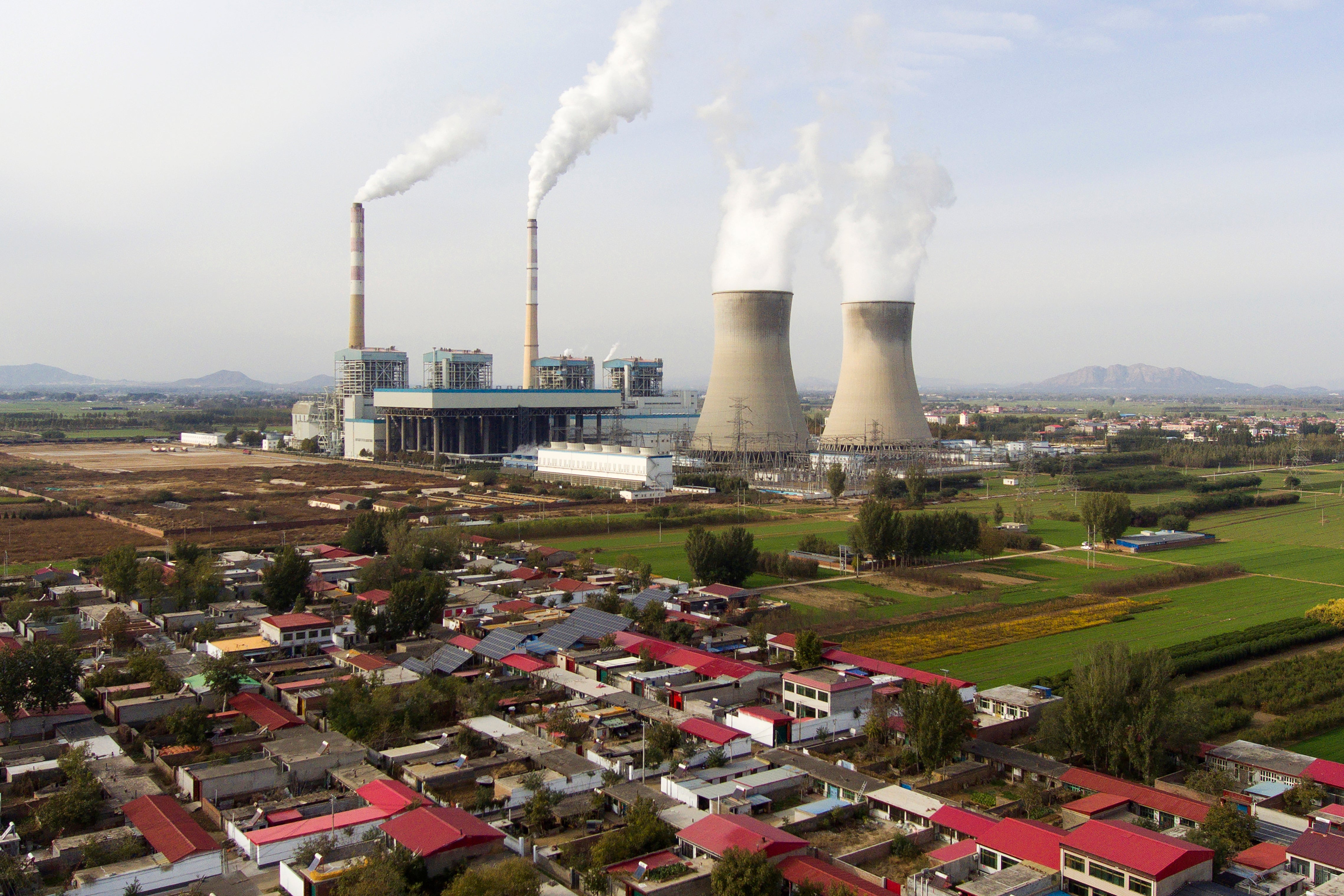World carbon dioxide emissions increase again, driven by China, India and aviation
A team of scientists reported that the world this year pumped 1.1% more heat-trapping carbon dioxide into the air than last year because of increased pollution from China and India

Your support helps us to tell the story
From reproductive rights to climate change to Big Tech, The Independent is on the ground when the story is developing. Whether it's investigating the financials of Elon Musk's pro-Trump PAC or producing our latest documentary, 'The A Word', which shines a light on the American women fighting for reproductive rights, we know how important it is to parse out the facts from the messaging.
At such a critical moment in US history, we need reporters on the ground. Your donation allows us to keep sending journalists to speak to both sides of the story.
The Independent is trusted by Americans across the entire political spectrum. And unlike many other quality news outlets, we choose not to lock Americans out of our reporting and analysis with paywalls. We believe quality journalism should be available to everyone, paid for by those who can afford it.
Your support makes all the difference.The world this year pumped 1.1% more heat-trapping carbon dioxide into the air than last year because of increased pollution from China and India, a team of scientists reported.
The increase was reported early Tuesday at international climate talks, where global officials are trying to cut emissions by 43% by 2030. Instead, carbon pollution keeps rising, with 36.8 billion metric tons poured into the air in 2023, twice the annual amount of 40 years ago, according to Global Carbon Project, a group of international scientists who produce the gold standard of emissions counting.
“It now looks inevitable we will overshoot the 1.5 (degree Celsius, 2.7 degree Fahrenheit) target of the Paris Agreement, and leaders meeting at COP28 will have to agree rapid cuts in fossil fuel emissions even to keep the 2 (degree Celsius, 3.6 degree Fahrenheit) target alive,’’ study lead author Pierre Friedlingstein of the University of Exeter said.
Limiting warming to 1.5 degrees is “just possible’’ but only barely and with massive emission cuts, said Intergovernmental Panel on Climate Change Chairman Jim Skea.
“We are clearly not going in the right direction,” Friedlingstein said.
This year, the burning of fossil fuel and manufacturing of cement have added the equivalent of putting 2.57 million pounds (1.17 million kilograms) of carbon dioxide into the atmosphere every second.
If China and India were excluded from the count, world carbon dioxide emissions from the burning of fossil fuels and cement manufacturing would have dropped, Friedlingstein said.
The world in 2023 increased its annual emissions by 398 million metric tons, but it was in three places: China, India and the skies. China’s fossil fuel emissions went up 458 million metric tons from last year, India’s went up 233 million metric tons and aviation emissions increased 145 million metric tons.
Outside of India and China, the rest of the world’s fossil fuel emissions went down by 419 million metric tons, led by Europe’s 205 million metric ton drop and a decrease of 154 million metric tons in the United States.
Europe’s 8% decrease was across the board with reduced emissions in coal, oil, gas and cement emissions, the report said. The U.S. decrease was almost entirely in coal, with slight increases in oil and gas emissions.
Last year the world's carbon emissions increased but dropped in China, which was still affected by a second wave of pandemic restrictions. This year, China's 4% jump in emissions is similar to the post-pandemic recovery other parts of the world had in 2022, Friedlingstein said.
The calculations are based on data from nations and companies for most of the year with the scientists projecting it through the end of this month.
United Nations Environment Programme Director Inger Andersen said the world needs to get to zero fossil fuel emissions “as fast as possible,” with developed nations getting there by 2040 and developing nations by 2050 or at least 2060.
___
Read more of AP’s climate coverage at http://www.apnews.com/climate-and-environment.
___
Follow Seth Borenstein on X at @borenbears
___
Associated Press climate and environmental coverage receives support from several private foundations. See more about AP’s climate initiative here. The AP is solely responsible for all content.